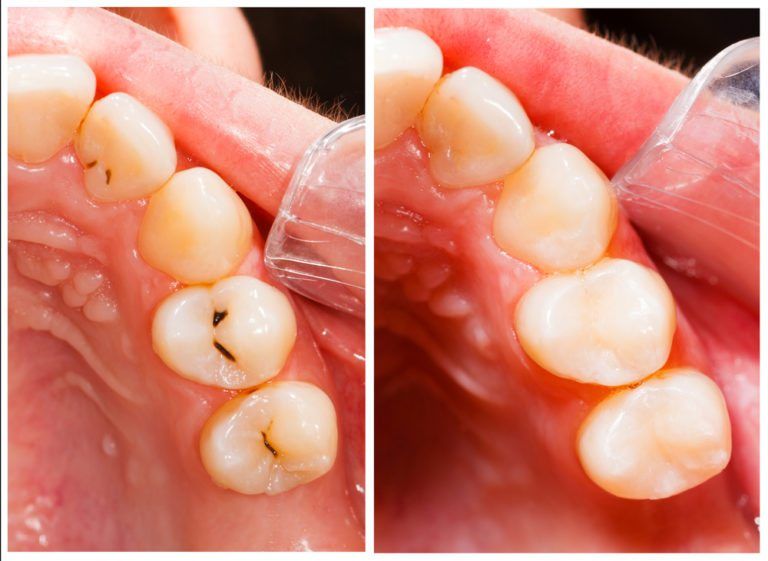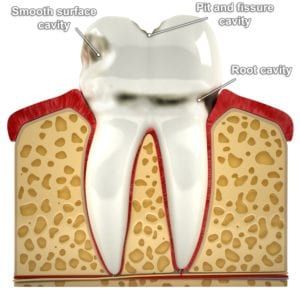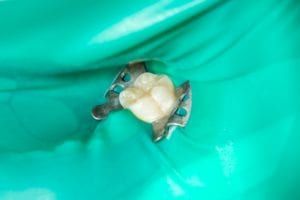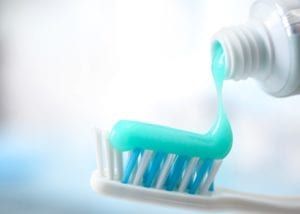Composite Tooth-Colored Fillings

Composite fillings, also known as tooth-colored fillings or white fillings, are a common restorative dental treatment used to restore decayed teeth. Although commonly used for decayed teeth, composite fillings can also be used to restore damaged teeth as well.
Did You Know?
Composite fillings can withstand moderate pressure and can be used on both the front and back teeth for small to medium sized fillings.
Frequently Asked Questions:
Am I a candidate for composite fillings?

You may be a candidate for a composite filling if you have a small to medium area of tooth decay that requires a dental filling. Signs of tooth decay can include teeth sensitivity, tooth pain, and white or brown spots on the tooth. Additionally, you may be a candidate for a composite filling if you have teeth that are chipped, cracked, or otherwise damaged. To find out if you are an ideal candidate for composite fillings, schedule a consultation with your Tigard dentist, Dr. Scott T. Simpson of Appletree Dentistry today.
How do composite fillings compare to other filling options?
When it comes to dental fillings, dental composite and amalgam are the two main options. Dental composite is a metal-free filling material composed of ceramic and plastic. Composite fillings are aesthetic, requires less removal of natural tooth surface for placement, and is versatile. Dental amalgam is a filling material composed of a metal mixture. Amalgam fillings are highly durable, more affordable, and lasts longer than composite fillings. While both filling materials have their pros and cons, many people decide upon composite fillings because they are metal-free and blend well with their natural teeth.
What can I expect when having a composite filling placed at Appletree Dentistry?
When having a composite filling placed at Appletree Dentistry, you can expect to have Dr. Simpson evaluate your teeth to ensure that a composite filling is the best option. During the examination, he may use a dental probe to determine the extent of decay. Dental x-rays will also be taken to further determine the extent and location of the cavity.

To place the filling, your mouth will first be anesthetized to keep you comfortable during the procedure. If needed, dental sedation can also be used to keep you calm. The first step in placing a composite filling is to prepare the tooth for the filling. To prepare the tooth, the decayed tissue will need to be completely removed.
Once the decayed tissue has been removed, the remaining tooth structure will be properly shaped to best accommodate the dental filling. Next, composite resin will be applied in layers until the filling is complete. Each layer will be hardened into place with a special curing light and the final layer will be shaped and polished so that it blends in with the surrounding tooth structure.
What can I expect after having a composite filling placed at Appletree Dentistry?
After having a composite filling placed, you will likely be numb for about 1-3 hours after the procedure until the dental anesthetic wears off. During this time, it is important to take care when eating or drinking. Beacause you can accidentally bite or burn yourself, it is recommended to refrain from eating or driking until you have regained some feeling. Once your mouth has regained feeling, you will have no further restrictions to follow. Because your composite filling is entirely hardened during the procedure, it can immediately be put to use.
How long do composite fillings last?

The average lifespan of a composite filling is about 5-7 years. However it is important to note that composite fillings in the back of the mouth absorb more chewing force than those in the front of the mouth. Because of this, they may wear out faster. If your composite filling begins to show signs of wear, it will either need to be repaired or replaced. Symptoms such as tooth sensitivity, visible cracks in the filling, and missing parts of the filling indicate a composite filling needs to be repaired or replaced.
To keep your filling in good condition for as long as possible, it is encouraged that you practice good oral habits. Such habits include brushing twice a day for two minutes at a time with a fluoridated toothpaste and flossing once a day. Additionally, you will need to attend regular dental checkups and professional teeth cleanings to ensure that your filling remains in good shape.
To preserve your composite filling, you will also need to avoid damaging behaviors such as nail biting, ice chewing, teeth grinding and clenching, and using your teeth to open packages. If you are a teeth grinder or clincher, a protective night guard may be suggested to protect your teeth and the dental filling from damage.
What happens if my composite filling needs to be repaired or replaced?
Just as with any type of dental restoration, composite fillings will wear out over time. Signs of wear include visible cracks or pieces missing from the filling, as well as tooth sensitivity. To repair a composite filling, the damaged part of the composite filling will need to be removed and the remaining filling reshaped. Then layers of composite resin will be placed over the filling and hardened with a curing light.
If the damage is too severe for a simple repair or if the composite filling is leaking, the entire filling will need to be removed and replaced. First, the filling will be drilled out of the tooth and then more composite resin will be layered in its place, effectively replacing the filling.
How much do composite fillings cost?
Composite fillings can cost an average of $135-$335 per tooth. The total cost will depend on the size and location of the filling. If you have dental insurance, you will likely be able to obtain partial coverage to offset the cost of your composite filling. However, the exact amount of coverage will vary depending on your dental insurance plan. Prior to treatment, our financing department will help you to determine your level of coverage.
For simply great dental care, schedule a consultation with your Tigard dentist, Dr. Scott T. Simpson of Appletree Dentistry today!


